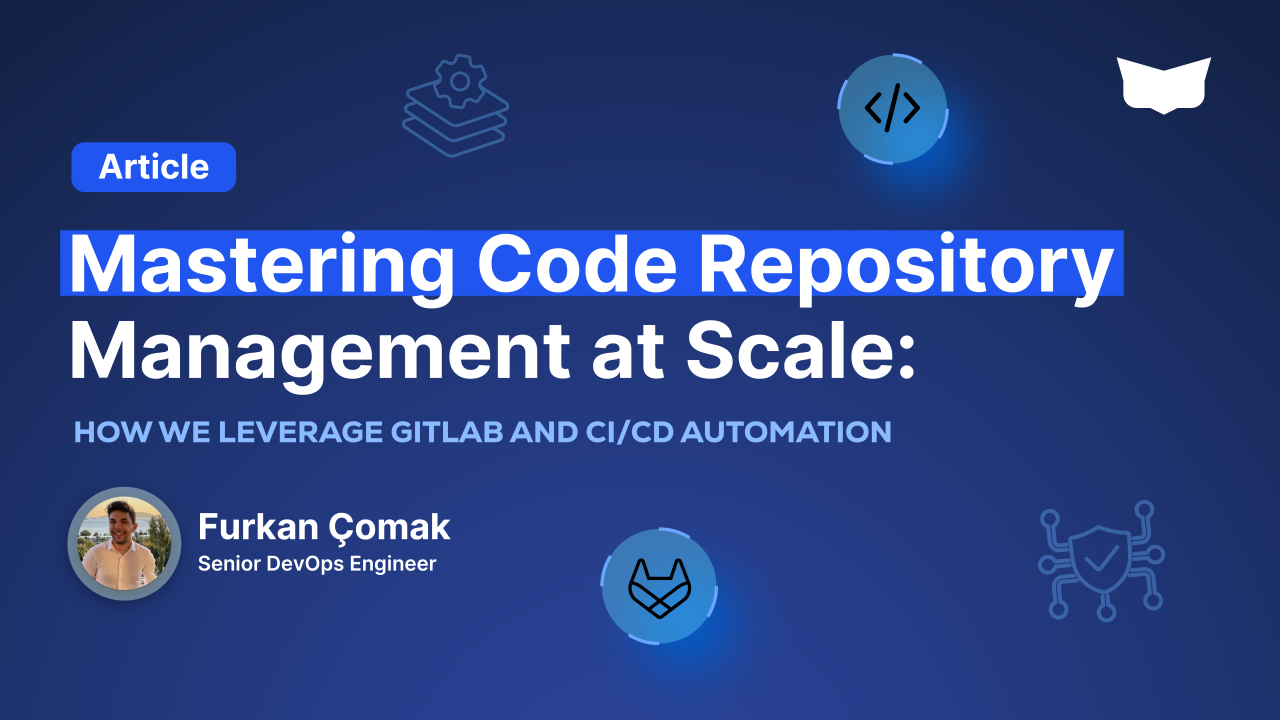
Mastering Code Repository Management at Scale: How We Leverage GitLab and CI/CD Automation
Managing hundreds of code repositories is not just a logistical challenge—it’s a strategic endeavor. It requires more than just oversight and version control; it demands a robust, scalable approach to maintain efficiency, consistency, and security. At Codeway, we’ve transformed this complex process into a streamlined operation using a combination of GitLab templates and declarative pipelines to drive development velocity without sacrificing quality.
The Challenges of Managing Code Repositories at Scale
When a team scales from handling a handful of repositories to managing hundreds, it’s easy for complexity to spiral out of control. Each repository might have unique dependencies, configurations, and CI/CD requirements, turning a simple bug fix or feature deployment into a potential nightmare. To tackle this, we’ve adopted a set of standardized practices that ensure smooth, consistent operations across all of our projects.
Our Solution: GitLab Templates and a Unified CI/CD Framework
We’ve implemented GitLab repository templates specifically tailored for different types of automation: Flutter builds, containerized image builds, and serverless deployments. Each template comes pre-packaged with a comprehensive CI/CD setup, ensuring that new repositories can be bootstrapped instantly with all necessary build and security checks. This approach provides a consistent framework for new projects, reduces manual configuration, and significantly cuts down onboarding time.
The CI Catalog: A Game-Changer for DevOps Efficiency
Our custom-built CI Catalog is at the heart of our efficiency. It simplifies several DevOps processes that would otherwise be manually intensive and error-prone:
1. Automated Service Account Creation: Setting up service accounts and role bindings manually across multiple cloud environments is tedious and risky. We automate this process, ensuring each deployment has the right permissions securely configured.
2. SonarQube Integration: Ensuring code quality is non-negotiable. Our CI system automatically imports new repositories into SonarQube, enforcing continuous code quality checks from day one.
3. Diverse Templates for Different Use Cases: Our catalog includes templates for serverless workloads on Google Cloud Platform (GCP), such as Cloud Functions (Node.js, Python) and Cloud Run services. This variety allows teams to start building with best practices baked in, regardless of the specific use case. Additionally, our client-side (Flutter) automation handles everything from initializing new Flutter projects to setting up Firebase configurations and generating necessary API keys. By automating even these initial steps, we’ve cut setup times by more than half.
4. Proactive Security Measures: We use Trivy for vulnerability scans and integrate secret detection to preempt security issues before they reach production. Combined with SonarQube’s static analysis, these tools act as a robust line of defense.
5. Image Signing and Verification: Using Skopeo, we sign our container images and store the signatures in an immutable database. This process is verified by Kyverno policies within our Kubernetes clusters, ensuring that only signed and validated images make it to deployment.
Building AI Images Faster: Solving the Build Time Problem
One of the unique challenges we’ve tackled is the complexity of building AI-specific container images. These images often involve multiple large dependencies, making the build process time-consuming and resource-intensive. We turned to Kaniko, a tool that allows us to build images directly within our Kubernetes clusters, enabling caching and minimizing the overhead typically associated with Docker builds. The result? Drastically reduced build times and a more secure, streamlined build process.
Automation at the Core: From GitLab Forms to Client-Side Tooling
Beyond templates and CI/CD automation, we use GitLab Forms to automate repository configurations—handling settings like branch protection, permissions, and naming conventions—ensuring compliance and consistency without manual intervention.
Why Declarative Pipelines Matter
The core philosophy driving our CI/CD strategy is declarative pipelines. Instead of defining intricate step-by-step instructions, we focus on specifying the desired end state. This shift offers greater flexibility and control, making our pipelines more adaptable to changes in project requirements and infrastructure. It also makes it easier to parallelize jobs, optimize resource usage, and scale automation seamlessly as the organization grows.
The Payoff: Faster, Safer, and More Scalable Development
Our approach to managing code repositories at scale has allowed us to maintain rapid development velocity while keeping complexity in check. By combining the power of GitLab templates with declarative CI/CD pipelines, we’ve built a system that not only scales effortlessly but also enforces security and quality at every stage. The result is a development process that empowers our teams to focus on building and shipping great software—without getting bogged down in operational overhead.
This strategy not only simplifies the onboarding of new projects but also drives continuous improvement, making it a cornerstone of how we maintain efficiency and quality at scale. As our repository count continues to grow, our CI/CD automation grows with it—ensuring that no matter how complex our infrastructure becomes, we can always keep pushing the boundaries of what’s possible.